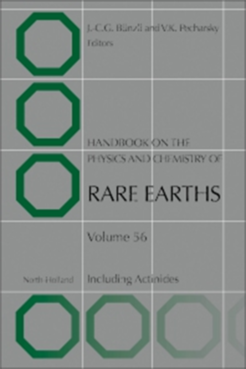Handbook on the Physics and Chemistry of Rare Earths
An invited chapter on uranium-based superconducting materials is published in the Handbook on the Physics and Chemistry of Rare Earths.

A rather large number of uranium-based materials are exotic – they show complex magnetic orders, coexistence of superconductivity with magnetism, enhanced effective electron masses, quantum critical behavior, and topological states. All of these peculiar phenomena are thought to arise from electrons’ dual nature, which is also believed to lie at the origin of high-temperature superconductivity. From a condensed matter point of view, the most intriguing uranium-based materials are in fact superconductors – UBe13, URu2Si2, and UPt3. In this review, I provide a brief historic overview of superconductivity in uranium-based systems, and address several pertinent questions: Is superconductivity in uranium-based materials always unconventional? Why are superconducting temperatures in uranium-based compounds so low, compared to other compounds, based on actinide or lanthanide elements? Is there a way to pinpoint crystallographic motifs, which are favorable for the emergence of superconducting state?












